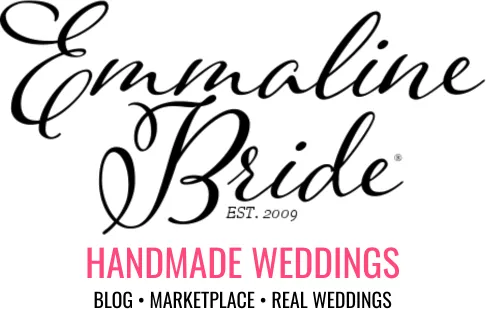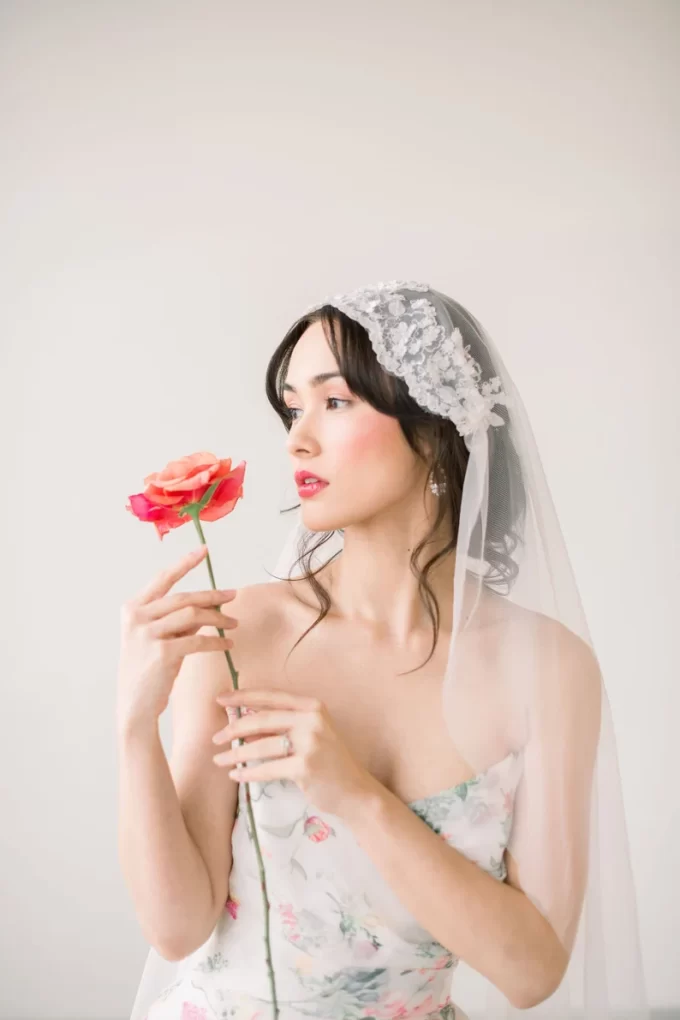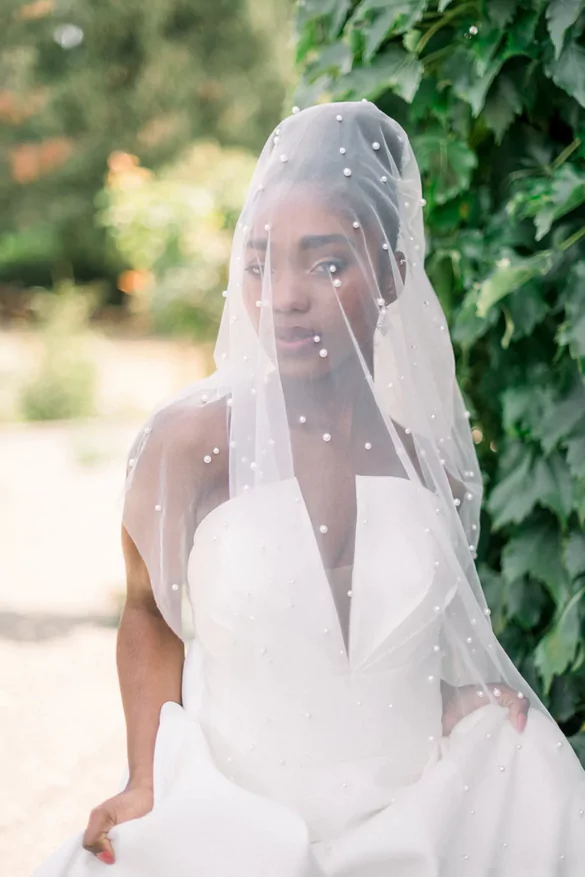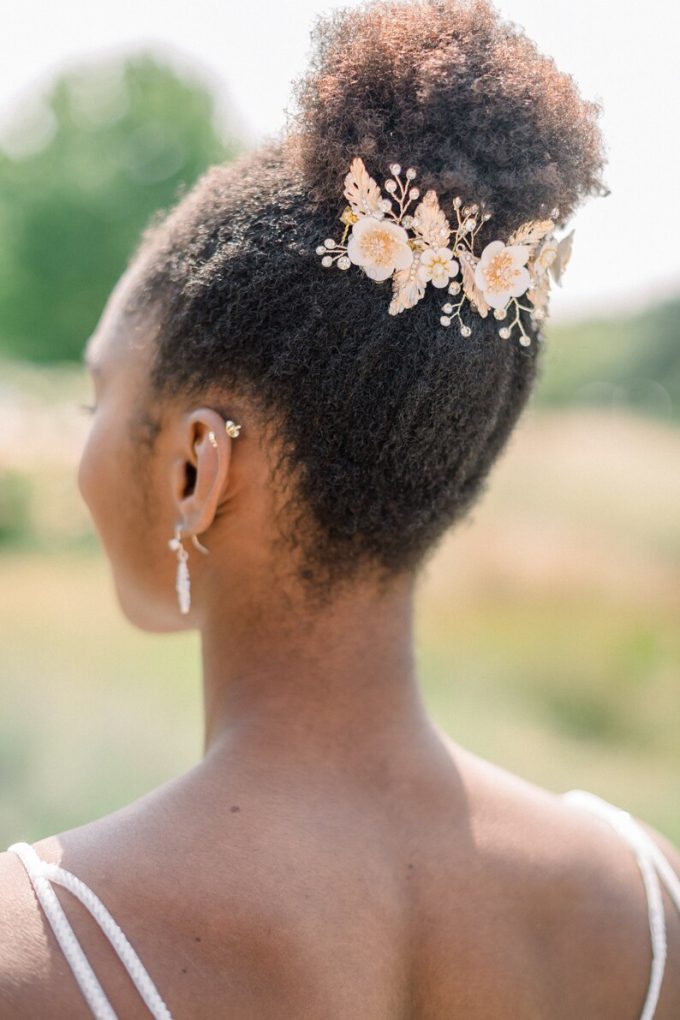Uh-oh, are you making these wedding veil mistakes? Avoid them BEFORE they happen with the most helpful wedding veil tips. Read on for more + subscribe for the latest to your inbox.
Once you’ve selected your gown, you may be wondering what type of veil you should get to match your wedding dress.
For many brides, this seems like an overwhelming feat because, well, this IS your first rodeo and you’re not likely a veil expert. Don’t worry, you’re not expected to be! We have the best wedding veil tips you need to know so you don’t make common mistakes brides make when selecting their veil… without even knowing it.
We’ll also help you avoid some pitfalls of choosing the wrong veil, storing it incorrectly, or buying it too soon (and regretting it later).
PRO TIP: For one of the best places to buy wedding veils, I highly recommend Tessa Kim. She’s an independent artist who designs some of the most beloved veils I’ve ever seen. Photo by Deyla Huss Photography. She is passionate about her work and it shows. You’ll see some stunning examples of her wedding veils and bridal veil alternatives in this blog feature.
Let’s begin with some of your top questions on veils including does the veil have to match the dress, what veil should I wear with my dress, and when should I buy my wedding veil. It’s easy once you get started, really!
Best Wedding Veil Tips
1. DO match your wedding veil with your dress.
Does the veil have to match the dress? Yes, it should… but only to a certain extent.
Match your wedding veil to the color of your dress.
When deciding how to match your veil to your dress, consider first the color. The color of your veil should complement your bridal gown beautifully: an ivory gown needs an ivory veil, a white gown should have a white veil, champagne bridal gowns look best with champagne-colored veils, etc.
Otherwise, a veil that is ivory against a pure-white dress will make it appear “dirty” in person and in photos.
Incorporate the style of your wedding dress into your veil.
Additionally, you should try to incorporate the same style of your veil to suit your dress. For instance, an old-fashioned lace gown will look lovely with a similar cathedral-length bridal veil featuring a similar lace pattern on the edging.
Here’s a beautiful example of a bridal veil that looks iconic for a vintage-style wedding dress. It’s handmade by TessaKim (check her out, she’s amazing) with photo by Deyla Huss Photography.
Don’t overwhelm your look.
Keep in mind the look should match just a hint, and not too much. For instance, if your wedding dress has pearls and rhinestones, you don’t need to run out and buy a veil that has the same elements, or you’ll get an overly-matched look. As a result, the veil will overpower your dress.
But if your veil is simple and you need to add a little flair, a veil — like this example with pearls — is one excellent way to do it. Veil is by Tessa Kim (photo: Deyla Huss).
Remember, when in doubt, select a veil that accents your style rather than letting it take over. :)
2. DON’T choose the veil before the dress.
Before you go veil shopping, make sure you select The Dress first.
It’s tougher to match your dress to the veil, so hold off on ordering a bridal veil until have purchased your bridal gown.
Most of the time, the wedding veil is quicker to find, purchase, and ship; a bridal gown takes much longer to make and alter, so you should have plenty of time by holding off.
Most wedding veils are non-returnable.
Choosing your veil before the wedding dress is a big mistake to avoid because veils are often non-returnable, as they are custom-made. If you purchase the veil first and then decide on a different style of gown, you’ll be left with a veil you can no longer use.
3. DO wear a veil if you like, but DON’T feel pressure to wear one.
Don’t make the mistake of wearing a veil if it’s not for you.
Moreover, don’t skip a veil because you think a veil is no longer in style or not trendy at the moment. Currently, veils are very on-trend, but fashion styles change all the time. It is best to listen to your heart and decide what style is going to make you look your best and feel your happiest on your wedding day.
Only choose the veil and wedding day accessories YOU want to wear.
This applies to all things with your wedding — not just your veil — but it’s certainly a good starting point.
4. DO cover your face with your veil if you like the look.
Some veils cover your face with a blusher veil attached; others do not. Here is an example of a beautiful pearl-embellished veil that covers the face.
Covering your face with a veil is NOT mandatory.
Do you have to cover your face with a veil? No! You can if you’d like, but it’s not mandatory.
Get a blusher if you wish to cover your face with a veil.
Furthermore, you cannot cover your face with the veil unless you have a blusher veil attached, so keep that in mind BEFORE you buy your veil.
You can also cover a portion of your face with a mini birdcage veil, like this example:
And if you decide for your face to remain uncovered and pin it back in your hair, that works, too.
5. DO have your veil professionally steamed before the wedding.
Veil netting and tulle can wrinkle easily. Without proper care and handling of your veil, it can quickly become a wrinkled mess. Therefore, once your veil arrives, ensure it is wrinkle-free and store it on a hanger like this. If it has wrinkles, get it professionally steamed a week prior to the wedding.
Use an S-clip hanger to store your veil.
A simple S-clip like this will keep your veil looking its best.

Buy a garment steamer for your veil and gown.
Furthermore, you can invest in a garment steamer like this to ensure your veil is wrinkle-free on the morning of your wedding day. I never travel without this one: it works the best!

Purchase a wedding garment bag.
If you’re traveling, make sure you invest in an (affordable, but durable) wedding gown garment bag, like this. It will ensure your veil looks nice along with your gown and avoid any mishaps or stains as you travel. You’ll still want to bring the steamer along, but it will ensure as few wrinkles and crumples as possible.

6. DO remove the veil after the wedding ceremony.
You’ll put on your wedding veil before the ceremony and remove it following signing of your marriage license (and any bridal photos you plan to do with your veil on).
Once you head to the reception, you can change up your look and add a wedding hair accessory: a bridal fascinator, headband, tiara, bridal hair pins, or hair flowers are just a few examples. It’s a fun way to change up your look, similar to how some brides opt for a reception dress to change into for the evening.
READ: 30 Best Wedding Reception Dresses for 2023.
Here’s an example of a beaded headpiece you can wear instead of a veil, or as a reception-ready look once you’ve removed your bridal veil.
Don’t put on your dress too early.
Avoid putting on your veil early in the morning; as a rule of thumb, it’s a good idea to bring the veil to the ceremony location and have it added to your style in the bridal suite moments before the ceremony will begin. Otherwise, you’ll add the veil, remove it, add it, and keep adjusting it, which causes flyways in your hair and messes up your ‘do.
Bring along plenty of hair pins.
Bobby pins like these are a lifesaver in a pinch when you’re putting on your veil. Bring them inside your wedding day emergency kit. Have someone help you — this is usually a memorable job reserved for your mother or important person in your life — add the veil to your hair. The veil is attached to a bridal comb like this, so it’s usually pretty easy to secure into your hair. However, you may need some reinforcements to keep it feeling sturdy on your head. And you don’t want the veil slipping down mid-ceremony. ;)
Buy bobby pins that match your hair color so they go unnoticed yet provide the additional support you may need. This is essential if your veil is a bit heavy due to special embroidery, pearls, rhinestones, etc. These pins are slide-proof and a personal favorite of mine for the occasion.

7. DO include your veil in your wedding day hairstyle.
If you’re getting ready at a salon, it isn’t necessary to bring your veil with you as you get your hair and makeup done on the day of. Your veil will be added to your hairstyle with a bridal comb like this, attached to it, prior to the ceremony. You needn’t put it on too early, so as to not wrinkle it while sitting or moving around.
Have photos of your veil to bring to your hairstylist.
Bring along photos of your veil and details of its length and style to your hairstylist on your wedding hair trial (typically done a few months to a few weeks ahead of the big day). Together, you can visualize how your hair should lay with (or without) a veil. Your hairstylist will give you tips on how to maximize your look and choose an updo or hair-down style and give you pointers on how to add the veil with the comb on the day of, which is extremely helpful to know ahead of time.
Bring your wedding veil to dress fittings.
Also, be sure to bring your veil to all of your dress fittings. This ensures you get an accurate visual of your complete bridal day look, while allowing the seamstress or tailor to make any adjustments, as needed. Without it, you’ll be wondering if the veil will go with the dress at all on the day of, and it’s best to be confident in your look ahead of time.
Now that you’re an expert, or at least know more than you did earlier, you’re ready to shop for your veil! There are beautiful artisans on Etsy that create wedding veils in any style you desire. I recommend the veils shown here by Tessa Kim as a great starting point.
► For additional options, check out this Etsy page and go from there.
Watch the video if you prefer:
[embedyt] https://www.youtube.com/watch?v=bMGLMptPmxw[/embedyt]
Do you have questions about wedding veil etiquette? What would you add to the list? Tell me your wedding veil mistakes to avoid and join the discussion in the comments below!
Happy Planning!
xo
Emma








